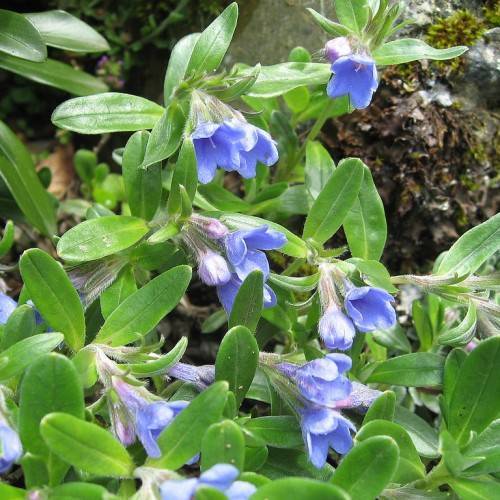
olive-leaved gromwell
Lithodora oleifolia
Cycle:
Herbaceous Perennial
Watering:
Average
Hardiness Zone:
6 - 8
Flowers:
Flowers
Sun:
Full sun
Leaf:
Yes
Growth Rate:
Low
Maintenance:
Moderate
Drought Tolerant:
Yes
Salt Tolerant:
Yes
Thorny:
Yes
Care Level:
Medium
watering
Olive-leaved gromwell (Lithodora oleifolia) is an easy-to-care-for, drought resistant, low-maintenance plant. For best results, it is important to provide this plant with the right amount and timing of water. Water olive-leaved gromwell when the top inch or 2 of soil feels dry to the touch. During the summer, when the plant is actively growing, water it once a week. In spring and fall, water the plant once every 2 weeks. During winter, when the plant is dormant and not actively growing, allow the soil to dry out completely between watering. In addition, during the summer, it is important to provide additional water during hot dry spells. For healthy plants, it is important not to overwater or underwater. Always check the soil's moisture levels with your finger before watering and never allow it to become waterlogged or completely dry in between waterings.
sunlight
Olive-leaved gromwell (Lithodora oleifolia) does best in full sun to partial shade. Since this species is native to the Mediterranean region, it is adapted to a lot of sunshine and hot temperatures. If the plant is in an area with full sun, it should receive 6 hours of direct sunlight per day during the summer months. In areas with partial sun, 4-5 hours of direct sunlight is ideal. In the winter months, olive-leaved gromwell will benefit from 2-3 hours of direct sunlight per day.
pruning
Olive-leaved gromwell (Lithodora oleifolia) should be pruned after blooming in the summer. Prune lightly to maintain a mounded appearance and remove dead or damaged foliage as needed. Cut off any leggy branches and trim the plant back to a preferred shape. Prune sparingly as excessive trimming can reduce blooming the following season. Larger, older plants may need pruning more heavily to encourage fresh, young growth.
